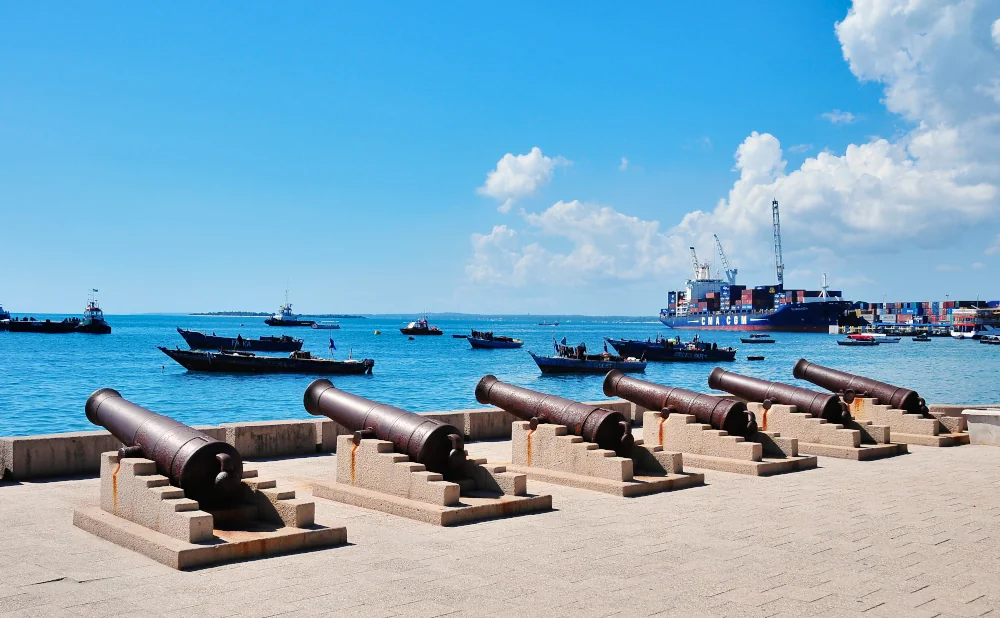The Rise of Zanzibar as a Slave Trade Hub
1. Historical Background:
-Zanzibar, an archipelago off the coast of Tanzania, played a pivotal role in the East African slave trade. Starting from the 17th century, it became a central hub for the capture, transport, and sale of slaves.
-The strategic location of Zanzibar, combined with the rise of Omani Arab influence, transformed the island into a bustling trade center. By the 19th century, Zanzibar was the largest slave market in East Africa.
2. The Process of Slavery:
-Slaves were captured from various regions in East Africa, often through violent raids by local chieftains or traders. These captives were then transported to Zanzibar under harsh and inhumane conditions.
-Upon arrival, slaves were sold in the notorious Zanzibar slave market. They were often kept in cramped, unsanitary holding cells, awaiting their sale to owners from across the Middle East, India, and other regions.
Key Historical Sites
1. The Former Slave Market Site:
-The former slave market site in Stone Town is a poignant reminder of Zanzibar's dark history. Today, it serves as a crucial historical and educational site.
-At this location, visitors can see the underground chambers where slaves were held before being sold. These chambers provide a grim insight into the appalling conditions endured by the captives.
2. The Anglican Cathedral:
-Built in the late 19th century, the Anglican Cathedral stands on the site of the former slave market. It was constructed to commemorate the abolition of slavery and serves as a symbol of hope and reconciliation.
-Inside the cathedral, visitors can view the altar, which is said to be positioned where the whipping post once stood. This post was used to test the strength and endurance of slaves before they were auctioned.
The Abolition of Slavery
1. Efforts Leading to Abolition:
-The abolition movement gained momentum in the late 19th century, driven by both international pressure and the efforts of missionaries and abolitionists.
-One significant figure in the fight against the slave trade was Dr. David Livingstone, whose reports and advocacy raised awareness about the horrors of slavery in East Africa.
2. The End of the Slave Trade:
-In 1873, the British government, under significant pressure, forced Sultan Barghash of Zanzibar to officially close the slave markets and end the trade.
- Although the official end of the slave trade was a critical milestone, illegal trading persisted for years. However, ongoing efforts eventually led to a significant decline in the practice.
Legacy and Education
1. Museums and Memorials:
-Zanzibar's history as a slave trade hub is preserved and taught through various museums and memorials. The Peace Memorial Museum and the Zanzibar Slave Museum provide extensive insights into this dark chapter.
-These institutions educate visitors about the impact of the slave trade on the local population and the broader historical context.
2. Cultural Impact:
-The legacy of the slave trade is deeply embedded in the culture and demographics of Zanzibar. The island's diverse population is a testament to the historical mingling of African, Arab, Indian, and European influences.
-Contemporary efforts in Zanzibar focus on acknowledging this painful past while promoting cultural understanding and unity.
Visiting these historical sites in Zanzibar offers a sobering yet essential perspective on the island's history. It provides a deeper understanding of the atrocities of the slave trade and the resilience of those who fought for its abolition. By learning about this history, visitors contribute to preserving the memory of those who suffered and recognizing the importance of human rights and dignity.
